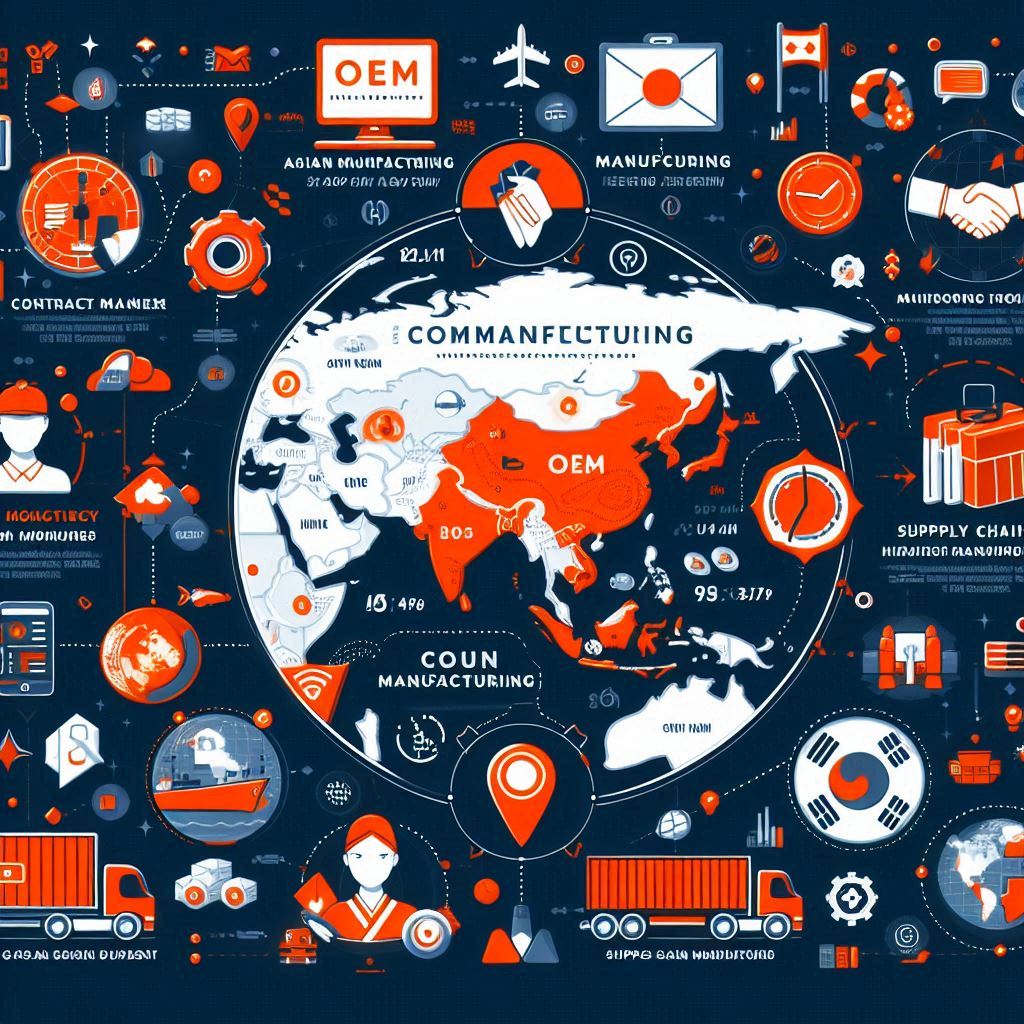
In today’s global market, the importance of Asian manufacturers cannot be overstated. Whether you’re a small business or a tech startup, selecting the right third-party manufacturer is crucial to your success. This guide will walk you through the top tips for choosing the right third-party manufacturer in Asia, highlighting key aspects such as Asian manufacturing benefits, overseas production challenges, international supply chain management, and cultural considerations in manufacturing.
Understanding the Benefits of Asian Manufacturing
Asian Manufacturing Benefits
When it comes to manufacturing, Asia stands out for several reasons. The most obvious benefit is cost-effectiveness. Labor and production costs are significantly lower in many Asian countries compared to Western counterparts. This allows businesses to maintain competitive pricing while still ensuring good profit margins. Additionally, many Asian manufacturers have access to advanced manufacturing technologies and infrastructures, which means high-quality production and innovative solutions are more readily available.
For instance, companies like Apple have thrived by leveraging the robust manufacturing ecosystem in China. The high production capacity and scalability offered by Asian manufacturers mean you can start small and scale up quickly as demand grows. These benefits make Asia an attractive destination for businesses looking to optimize their manufacturing processes.
Identifying The Right Third-Party Manufacturer
Choosing the right third-party manufacturer depends largely on your specific business needs. There are several types to consider: Original Equipment Manufacturers (OEM), Original Design Manufacturers (ODM), and contract manufacturers. Each type offers different services, from producing your design to creating custom products based on their designs.
Evaluating your needs is the first step. Do you need a manufacturer to produce existing designs, or are you looking for innovation and customization? Once you have a clear idea of your requirements, you can start matching them with the capabilities of potential manufacturers. Always check their portfolio and client reviews to ensure they can deliver what you need. For example, a startup developing a new tech gadget would benefit from an ODM with a strong background in electronics.
Navigating Overseas Production Challenges
Managing overseas production comes with its own set of challenges, but with the right strategies, these can be effectively mitigated. Communication is key. Establishing clear lines of communication and regular updates helps prevent misunderstandings and ensures everyone is on the same page. Utilizing technology for real-time monitoring and quality control can also make a significant difference.
Regular visits and on-site inspections are crucial. These visits help build relationships and ensure that the manufacturer meets your standards. For instance, a fashion brand working with a factory in Vietnam might schedule quarterly visits to oversee production and ensure quality.
Managing International Supply Chains
A robust supply chain is the backbone of successful overseas manufacturing. Building a reliable international supply chain involves selecting the right logistics partners, understanding shipping and customs regulations, and planning for potential disruptions. Effective supply chain management ensures that your products are delivered on time and within budget.
Risk management is another crucial aspect. Having contingency plans in place can save you from potential pitfalls. For example, during the COVID-19 pandemic, many companies faced supply chain disruptions. Those with contingency plans and diversified suppliers managed to navigate the crisis more smoothly.
Understanding and Respecting Cultural Considerations
Cultural Considerations in Manufacturing
Cultural differences can significantly impact business practices, and understanding these nuances is vital for building strong relationships with Asian partners. Respecting local customs and communication styles can go a long way in fostering trust and cooperation.
For instance, in Japan, business meetings often start with a formal exchange of business cards and a slight bow. Understanding and respecting these customs shows that you value and respect their culture, which can strengthen your partnership. Avoiding cultural missteps, such as being overly direct or dismissive, is essential for maintaining a positive relationship.
Conducting Due Diligence and Compliance Checks
Thorough due diligence and compliance checks are essential when choosing a third-party manufacturer. This involves conducting background checks, ensuring compliance with international standards and regulations, and evaluating their ethical and environmental practices.
For example, a company looking to manufacture toys might need to ensure the factory adheres to safety standards and uses non-toxic materials. Compliance failures can lead to severe consequences, including legal issues and damage to your brand’s reputation. Always verify that potential manufacturers meet your standards and values.
Leveraging Local Expertise and Networks
Local experts and business networks can provide invaluable insights and assistance. These professionals understand the local market and can help you navigate complex regulations and business practices. Utilizing their expertise can save you time and resources.
For example, a company entering the Chinese market might work with a local consultant who can provide insights into local consumer behavior and regulatory requirements. Building strong local networks also opens up new opportunities and partnerships, enhancing your business prospects.
Choosing the right third-party manufacturer in Asia is a critical decision that requires careful consideration and planning. By understanding the benefits, navigating production challenges, managing supply chains, respecting cultural differences, conducting thorough due diligence, and leveraging local expertise, you can build a successful and sustainable manufacturing partnership in Asia. Take the time to research and choose wisely – your business’s future success depends on it.




